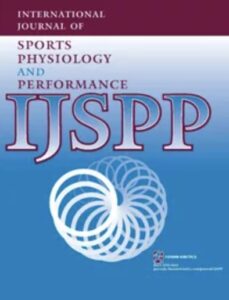Publications

Observation of the Achilles Tendon and Gastrocnemius Muscle’s Passive Stiffness During an Incremental Running Protocol
Authors: Anh Phong Nguyen 1, 2, Laurent Bosquet 3, Laureen Cugnet-Evans 1, Christine Detrembleur 1, Philippe Mahaudens 1 ,4, 5
Affiliations:
- Institut de Recherche Experimentale et Clinique, Neuromusculoskeletal Lab, Universite Catholique de Louvain, Brussels, Belgium
- The Running Clinic, Lac Beauport, QC, Canada
- Laboratoire Move, Universite de Poitiers, UFR-STAPS, Poitiers, France
- Service d’Orthopedie et Traumatologie, Clinique Universitaire Saint Luc, Brussels, Belgium
- Service de Medecine Physique, Clinique Universitaire Saint Luc, Brussels, Belgium
Journal: International Journal of Sports Physiology and Performance - September 2024, Volume 19, Issue 11, Pages 1321-1327 (DOI: 10.1123/ijspp.2024-0125)
-
Field & Applications:
- Sport
- Muscle development / Performance
- Fatigue / Overtraining
Objective: Passive stiffness, a biomechanical parameter, has a potential influence on running economy, thus playing a pivotal role in performance. This study aimed to quantify passive stiffness of the Achilles tendon and gastrocnemius muscle using myotonometry throughout an incremental running protocol.
Methods: Twenty-one male participants underwent a multistage incremental test (Bordeaux test) on a treadmill until exhaustion. Passive stiffness of the gastrocnemius muscle and Achilles tendon was measured using a MyotonPRO device. Measurements were taken before, during, and after the incremental test.
Results: Our findings indicated that passive stiffness of the medial gastrocnemius decreased at rest between prerun and postrun assessments (−20.12 N·m−1, P = .012). Furthermore, during the test, stiffness increased at low intensity (at 50% of maximal aerobic speed: +104.8 N·m−1, P = .042), returning to baseline values as intensity increased.
Conclusions: Throughout an incremental running protocol, both Achilles tendon and gastrocnemius muscle stiffness initially increased and then decreased with escalating percentages of maximal aerobic speed. A deeper understanding of stiffness in running can inform more effective recommendations for runners’ strengthening and training.
Keywords: rheology, viscoelasticity, myotonometry, biomechanics
During an incremental running protocol, we observed that both AT and gastrocnemius muscle stiffness initially increased and then decreased as the percentage of MAS increased, corresponding to higher speeds. Furthermore, postrun passive stiffness measurements of the AT and LG at rest did not exhibit any changes from baseline values, while stiffness in the MG decreased.


